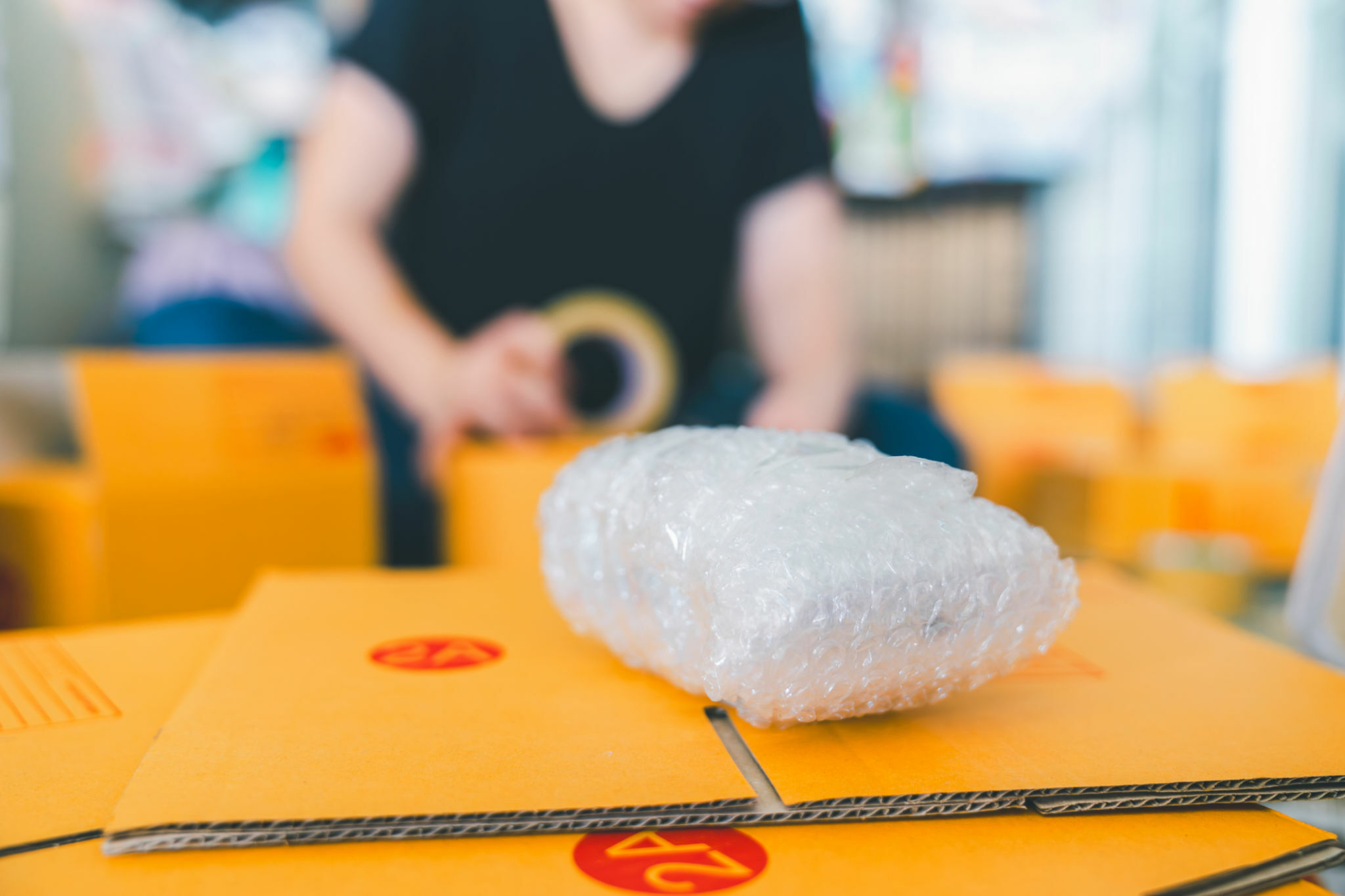Industrial Metal Packaging: Strength and Sturdiness in Every Design
Industrial Metal Packaging: Strength and Sturdiness in Every Design
Blog Article
Effective Industrial Recycling Solutions for Lasting Packaging: A Comprehensive Overview
In today's significantly environmentally-conscious world, the demand for sustainable product packaging services has never ever been greater. To satisfy this demand, services throughout sectors are proactively seeking efficient commercial recycling options. Navigating the complex landscape of sustainable packaging can be challenging without an extensive guide. That's where this thorough guide on efficient industrial recycling services for sustainable product packaging comes in. By checking out crucial locations such as product packaging material option, designing for recyclability, executing recycling infrastructure, collaborating with recycling partners, and tracking and gauging recycling success, this guide will equip you with the knowledge and devices essential to make enlightened decisions and drive positive adjustment within your company. Whether you're a packaging professional, sustainability supervisor, or merely curious about the subject, this guide will certainly provide valuable understandings and approaches to assist you navigate the world of sustainable product packaging.
Packaging Product Selection
The choice of packaging materials plays an essential role in guaranteeing the sustainability of industrial reusing services. The choice of products is crucial in reducing environmental impact and making best use of reusing performance when it comes to lasting product packaging. Choosing the appropriate products can help in reducing waste generation, save resources, and advertise a circular economy.
One essential element to consider in packaging product option is recyclability - plastic container manufacturer. Products that can be easily reused and included back right into the production cycle are preferred. Products like cardboard, paper, glass, and specific types of plastics can be reused several times without shedding their quality. On the other hand, products that are tough to recycle, such as non-recyclable compounds or mixed plastics, can develop obstacles for the reusing process and might end up in incinerators or land fills.
Another factor to consider is the use of eco-friendly and eco-friendly products. Packaging made from sustainable sources, such as plant-based plastics or biopolymers, can help minimize dependence on nonrenewable fuel sources and reduce climate change. Furthermore, biodegradable products break down normally over time, lowering the accumulation of waste in landfills.
Additionally, the weight and quantity of packaging materials must be decreased to decrease transportation expenses and power intake. Lightweight products not just require fewer resources throughout production yet also add to decrease carbon emissions during transportation.
Creating for Recyclability
Packaging designers need to focus on the usage of materials that are widely approved for recycling and have actually developed reusing infrastructures. Materials such as glass, light weight aluminum, and specific types of plastic, like Pet dog and HDPE, are generally reused and should be chosen over materials that are expensive or hard to reuse.
An additional critical factor to consider in developing for recyclability is the elimination of unneeded elements or materials. By minimizing the variety of layers, coverings, and added parts, packaging can be made less complex and much easier to recycle. Additionally, developers ought to intend to decrease the usage of blended materials, as they can make complex the recycling procedure.

Implementing Recycling Framework
Effective execution of recycling infrastructure is crucial for the success of commercial reusing services. Without proper infrastructure in position, the reusing procedure becomes ineffective and inefficient, impeding the total objective of lasting packaging.
To carry out recycling infrastructure successfully, numerous key factors need to be considered. There should be a well-organized collection system that promotes the splitting up and collection of recyclable products. This can consist of marked reusing bins in public areas, in addition to partnerships with waste monitoring business for curbside pick-up and sorting.
Once gathered, the recyclable materials need to be transported to reusing facilities in a prompt way. This needs effective logistics and transport networks, making certain that the materials get to the ideal centers right away.
At the reusing centers, advanced sorting and processing technologies ought to be in area to separate various kinds of materials effectively. This consists of making use of automated sorting equipments, optical scanners, and manual sorting strategies.
Moreover, there need to be a robust market need for recycled products. This can be accomplished with collaborations with suppliers and sectors that make use of recycled materials in their manufacturing processes. Creating a stable market for recycled products incentivizes the reusing sector and advertises the circular economic climate.
Working Together With Recycling Allies

One secret facet of collaborating with recycling companions is the establishment of clear interaction networks. It is necessary to establish Extra resources open lines of interaction to help with the exchange of details, updates, and responses. This enables both parties to remain informed concerning the progress of recycling campaigns and deal with any kind of difficulties or issues that may emerge.
Furthermore, partnership can entail collaborations in designing and applying recycling programs. Reusing companions can supply important understandings and guidance in establishing efficient collection systems and identifying one of the most suitable recycling modern technologies. By working with each other, businesses and recycling companions can optimize the recycling procedure and minimize waste.
Furthermore, collaboration can prolong past the functional aspects of recycling. It can also encompass advocacy and education and learning campaigns. By joining forces, companies and reusing companions can raise awareness regarding the relevance of reusing and advertise the adoption of sustainable packaging methods amongst consumers and various other stakeholders.
Monitoring and Measuring Recycling Success
To ensure the effectiveness of industrial recycling remedies and the achievement of sustainable packaging goals, it is vital for organizations and their recycling partners to develop a comprehensive system for tracking and measuring recycling success (bulk container recycling). Tracking and gauging recycling success enables organizations to analyze the influence of their reusing efforts, determine areas for improvement, and set meaningful targets for future progress
One way to track recycling success is through making use of data collection and evaluation devices. By gathering data on the amount of product packaging waste created, the percent of waste that is recycled, and the kinds of materials being recycled, companies can get valuable understandings right into their reusing performance. This data can after that be analyzed to identify fads, patterns, and locations of ineffectiveness.
One more crucial facet of monitoring and determining recycling success is developing standardized and clear metrics. This enables businesses to contrast their performance versus sector benchmarks and track their development in time. Metrics such as reusing prices, waste diversion rates, and greenhouse gas emissions can provide a measurable step of a company's reusing success.

Verdict
In verdict, executing effective commercial recycling services for sustainable product packaging requires mindful consideration of product packaging product selection, creating for recyclability, executing reusing facilities, teaming up with recycling partners, and monitoring and measuring reusing success. By incorporating these techniques, businesses can add to a more lasting and environmentally-friendly technique to packaging, minimizing waste and advertising the round economic climate.
By discovering essential locations such as product packaging product choice, making for recyclability, executing recycling framework, collaborating with recycling companions, and tracking and determining recycling success, this guide will certainly equip you with the understanding and devices required to make enlightened choices and drive positive modification within your company. Packaging designers need to prioritize the use of materials that are commonly approved for reusing and have actually established reusing frameworks.Collaboration with recycling partners is important for the Full Report effective execution of industrial recycling services and the accomplishment of lasting packaging goals. By joining forces, services and reusing companions can raise understanding regarding the value of reusing and advertise the adoption of lasting product packaging methods among consumers and various other stakeholders.
By collecting data on the amount of packaging waste generated, the percentage of waste that is recycled, and the types of materials being recycled, businesses can gain important insights right into their reusing performance.
Report this page